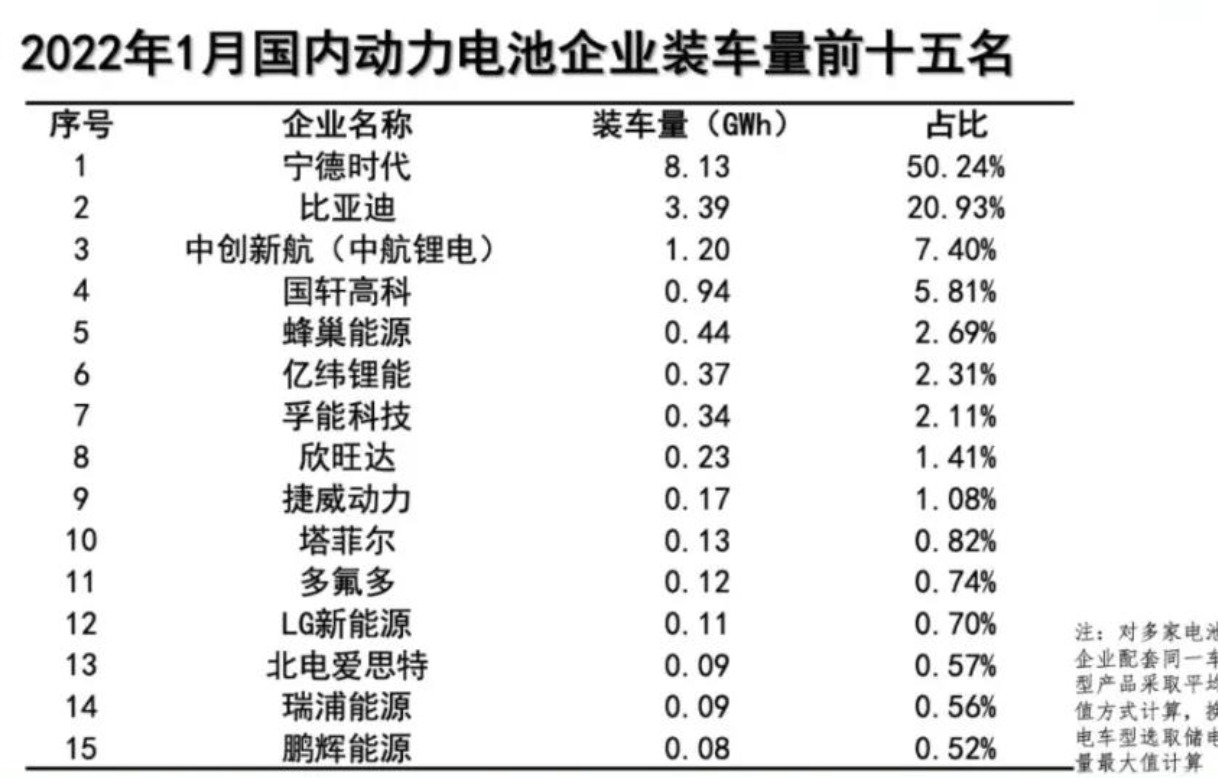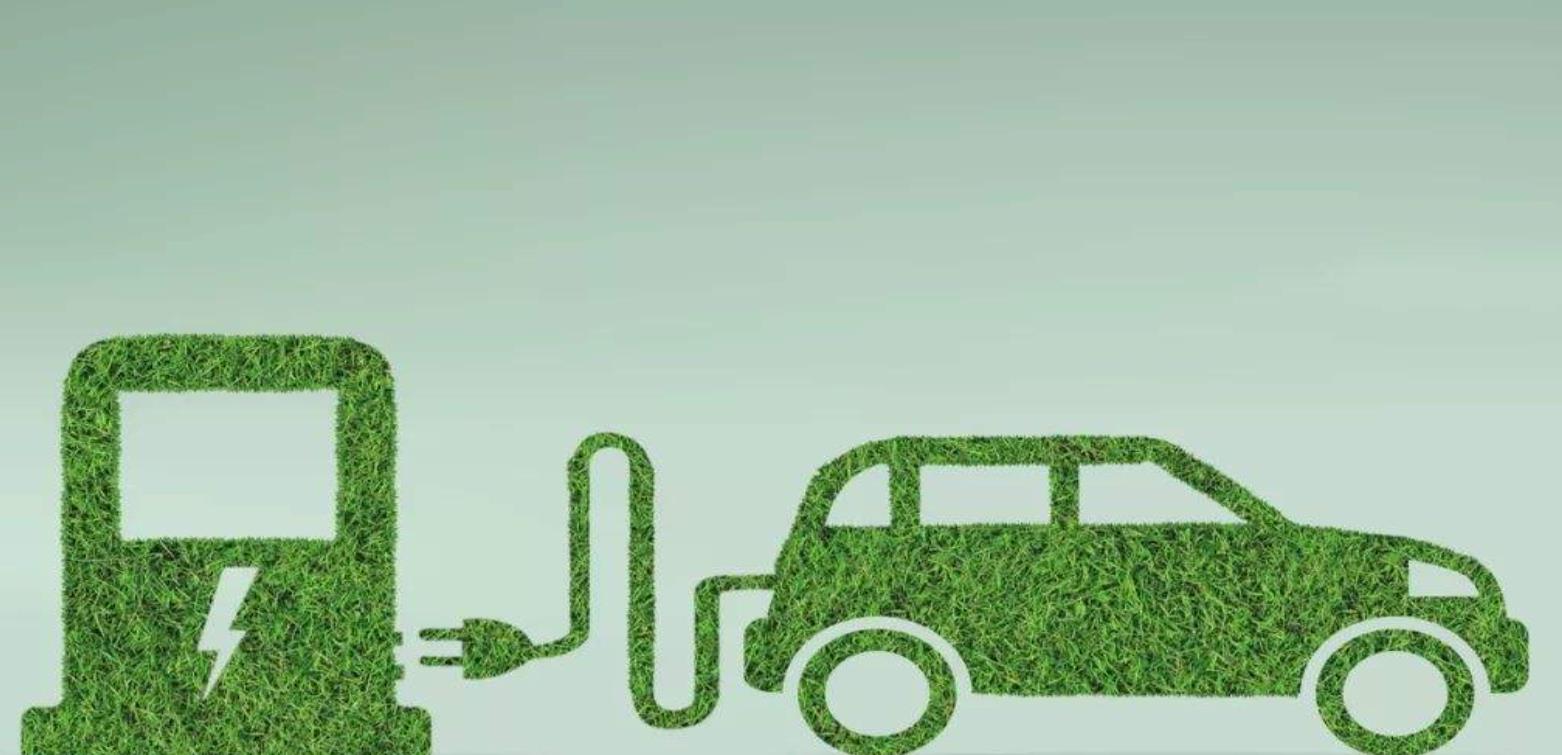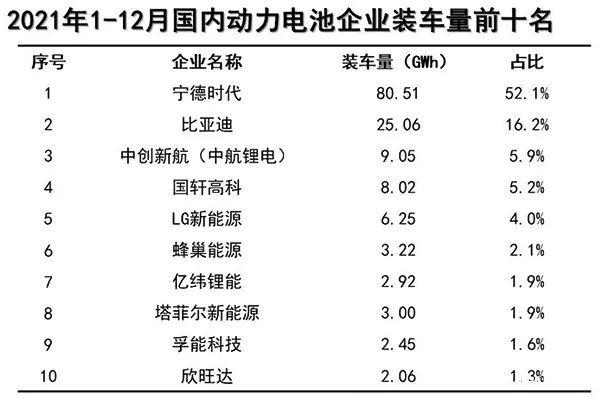The global power battery represents the strategic road of "carbon neutralization" of enterprises
AddTime:2021-10-29 Author:Xinyuren Hits:2938
In the era of globalization, the fate of all mankind shares weal and woe, and carbon neutralization has increasingly become a major issue related to the overall destiny of mankind.
Data show that since the first industrial revolution, mankind has accumulated more than 1.5 trillion tons of carbon dioxide to the earth. With the continuous accumulation of carbon dioxide emissions, the global temperature is also rising. In the past 100 years, the global average temperature has increased by 0.8 ℃. If the temperature rise is allowed to rise, the global food production will continue to decline due to drought after 2050, which will directly affect human satiety and survival.
Of course, the harm of excessive carbon dioxide emissions is far more than the reduction of food production. In response to the climate crisis, the world has set off an unprecedented energy revolution. Up to now, 130 countries, which account for about 70% of the global economy, have successively put forward the route to achieve the carbon neutralization goal. Among them, the European climate act passed by the European Union in June this year sets the goal of carbon neutrality in 2050. In April this year, the Chinese government reiterated its solemn commitment to "strive to achieve carbon peak by 2030 and carbon neutralization by 2060".
In this wave of carbon neutralization, the automotive industry, as an important source of global greenhouse gases, has become the main battlefield of global focus. According to the statistics of the International Energy Agency (IEA), in 2019, the global power and heat production industry accounted for 42% of carbon dioxide emissions, and the transportation industry accounted for 24.6%. Therefore, in order to achieve carbon neutrality in the field of transportation, it is necessary to limit the fuel vehicles burning fossil fuels.
At present, the global mainstream car companies, including Volkswagen, Daimler, BMW and GM, have issued ambitious electrification strategies. Among them, Volkswagen Group announced that its electric vehicle production will account for more than 50% of new vehicles by 2030, and six battery production bases with a capacity of 240gwh are planned to realize the closed-loop supply of the industrial chain; GM announced that it would realize full electrification by 2035; Daimler announced to raise the penetration target of pure electric vehicles in 2030 to 100% on the basis of the original strategy... In the future, electric vehicles will be popularized at a faster speed and reach a penetration rate of more than 30% in 2030.
Global car companies launched a carbon neutral competition, which indicates that the demand for power batteries will increase geometrically in the future. According to the report of the International Energy Agency, batteries used only for electric vehicles will need about 6.6twh by 2030 and 14twh by 2050. This means that the battery capacity will increase 25 times in the next 10 years.
However, to achieve the goal of carbon neutrality in transportation, it is far from simple to produce more power batteries and make more electric vehicles instead of fuel vehicles.
01
Comprehensive conversion of green energy
Because there is no exhaust pipe for electric vehicles, it is easy to give people an illusion that the carbon dioxide emission of electric vehicles is zero. In fact, according to the life cycle assessment method of European car enterprises, the carbon emission of producing an electric car is not less than that of producing a fuel car, but more.
This is also confirmed by a set of data mentioned by sun Fengchun, academician of the Chinese Academy of engineering, in a speech: the carbon emission from the production of a fuel passenger car is 9.2 tons of carbon dioxide equivalent, while the carbon emission from the production of a ternary power battery passenger car is 14.6 tons, and the carbon emission from a lithium iron phosphate battery passenger car is 14.7 tons. In other words, in terms of production stage, the current electric vehicle is not low-carbon.
According to the report released by McKinsey, it is estimated that by 2025, the carbon emissions in the production stage of the whole electric vehicle industry chain will account for 45% of the total emissions in the whole life cycle of the vehicle; By 2040, this proportion will reach about 85%.
Then, why does the electric vehicle, dubbed "new energy", show the characterization of "anti-low carbon"? The main reason for this is that carbon based fossil energy still accounts for a large proportion in the current global energy structure. Toyota President Akio Toyoda once mentioned that thermal power accounts for 77% of Japan's power supply, and renewable energy and nuclear power account for only 23%.
This situation in Japan is quite common all over the world. Industry insiders said, "from the perspective of carbon emission analysis in the whole life cycle, considering the carbon emission in the production process of electric vehicles, if most of the energy used is still from fossil energy power generation, the impact of electric vehicles on carbon reduction and global climate change is very limited."
Therefore, only when the power source is completely clean, that is, green power generation is fully realized, it is possible to really significantly reduce carbon dioxide emissions. It should be pointed out that clean routes and specific measures for sustainable development should be formulated not only in the production of electric vehicles, but also in the whole automobile industry chain, including vehicle enterprises and battery enterprises, but also in operation, logistics and other links, so as to achieve the comprehensive zero carbon emission goal.
In fact, many enterprises have already taken action. For example, Volvo requires all primary suppliers to use 100% renewable energy "green power" in 2025; In March this year, BMW Group announced that its plants in dingfen and Munich would use 100% of local green hydropower for the production of new electric bmwix and bmwi4, and strive to achieve climate neutrality in the whole value chain by 2050; Porsche plans to achieve carbon neutrality in the whole value chain by 2030; Mercedes Benz plans to ensure that its passenger cars are carbon neutral in the whole value chain by 2039.
In the whole electric vehicle industry chain, the battery link is undoubtedly an "important town" for carbon reduction. According to the research data of academician sun Fengchun, the carbon emission from the production of power batteries accounts for about 19% - 20% of the production process of pure electric passenger vehicles. T & E data also show that the carbon emission range of battery production alone is 61 ~ 106 kg Co / kWh. In extreme cases, it can account for more than 60% of the whole life cycle of electric vehicles.
Therefore, the realization of low-carbon production in power battery manufacturing is very important for the carbon neutralization of the whole automobile industry chain. At present, many battery suppliers with forward-looking vision in the world, such as Tier1's Ningde era and LG new energy, have begun decarbonization. The comprehensive transformation of green energy is one of the three strategies proposed by LG new energy to realize carbon neutralization. At present, LG new energy has used 100% green power in factories in Poland and the United States, and 100% green power will be used in China and South Korea by 2030.
The latest carbon reduction action of LG new energy is that in December last year, its cathode material plant in Jiangsu, China signed a power purchase agreement with local wind and solar power generation enterprises to supply 140gwh. Since 2021, the plant will only use renewable energy; In 2021, LG new energy plans to promote the use of renewable energy for power generation at the precursor plant in Quzhou, Zhejiang Province through the power purchase agreement.
It is understood that as the world's leading battery supplier, LG new energy actively implements re100 (renewable energy 100%) and EV100 initiatives. Its decarbonization action is not limited to battery production. The company plans to convert the power used by all global operating departments into renewable energy green power by 2030. This commitment will achieve the goal 20 years ahead of re100 Initiative (2050).
It is worth noting that the increasing demand for electric vehicles and renewable energy will burden the power grid. Due to the inherent intermittency of renewable energy, effective time-sharing energy storage technology is needed. With the help of digital technology and energy storage system, using large-scale distributed smart grid to meet the time-varying power demand will be the best scheme for green energy transformation. Therefore, LG new energy will contribute to the construction of smart distributed power grid through diversified energy storage solutions and escort the realization of carbon neutralization in the whole industrial chain.
02
Intelligent manufacturing innovation
In addition to using green electricity in production, it is also an important way to reduce carbon by improving yield and reducing raw material loss through intelligent manufacturing and improving manufacturing technology. Globally, car companies including Tesla, Volkswagen, Mercedes Benz and BMW have taken the lead in building a model factory in line with the vision of carbon neutrality by upgrading intelligent manufacturing, and promoted it in the global production system. It is reported that "a paint factory workshop of an automobile manufacturer adopts a circulating air supply system to reduce energy consumption by 70%".
As the person in charge of a Chinese science and technology enterprise said, "The comprehensive industrialization of intelligent manufacturing is consistent with the 'double carbon goal' of carbon peak and carbon neutralization. The core value of intelligent manufacturing for production and manufacturing scenarios is to reduce cost, increase efficiency and improve quality, that is, to produce and manufacture with higher quality, so as to improve the overall production efficiency, reduce the waste of raw materials and finally achieve the goal of reducing carbon emissions".
As the battery sector accounts for a high proportion of carbon emissions in the whole life cycle of vehicles, the importance of intelligent production of battery enterprises is becoming more and more prominent. In terms of intelligent manufacturing innovation, LG new energy's layout is also ahead of others. It is understood that LG new energy will reduce losses and improve energy efficiency through the innovative process of digital intelligent manufacturing. It is expected that the energy efficiency of its new plant will improve by 2025 In order to make the battery more environmentally friendly, LG new energy will also use more energy-saving processes to manufacture materials, electrodes and cells.
It is worth noting that, given the energy consumed by the production of batteries, making the batteries more durable, better performance and providing higher cumulative replay power is also an important measure to help electric vehicles achieve the net zero goal. In fact, mainstream battery manufacturers all over the world are committed to the research and development of higher quality power batteries.
Taking LG new energy as an example, in view of the high-end demand of electric vehicle enterprises, the company has taken the lead in realizing the technological breakthrough and mass production of high nickel quaternary lithium battery (NCMA) in the world The mass production of negative electrode products also makes the energy density of this four-way battery higher and the fast charging performance better, which fundamentally solves the mileage anxiety of new energy vehicle users.
At the same time, with advanced thermal management technology, the latest safety technology module and CTP highly integrated design, LG new energy battery products can achieve no fire and self extinguishing, and greatly improve the safety and reliability of high-energy density power batteries. In the post lithium era, LG new energy will be committed to developing safer all solid-state batteries and lightweight lithium sulfur batteries to meet the diversified needs in the future Use the scene.
It is understood that the new generation of all solid-state battery technology jointly developed by LG new energy and the University of California, San Diego has overcome the difficulty of charging only in the environment above 60 ℃ in the past, and achieved a technological breakthrough that can be charged quickly at room temperature. The all solid-state battery using pure silicon as negative electrode material has realized charging at room temperature for the first time in the industry (room temperature usually refers to 25 ℃) for more than 500 cycles.
These farsighted layouts highlight LG new energy's leading position in leading the development of the industry in the era of carbon neutrality.
03
Battery life cycle management
In December 2020, the EU issued a draft proposal for a new battery regulation, and introduced 13 measures for the whole life cycle of the battery industry, including requirements on battery classification, reuse, recycling, carbon footprint, electrochemical performance and durability. At the same time, it stipulated the responsibilities of manufacturers, battery design requirements, battery material recycling, supply chain due diligence, etc. the new regulation was approved The industry interprets it as the next milestone of the EU's implementation of the battery strategic action plan, which means that "the battle of battery comprehensive carbon neutralization has begun".
The purpose of the new EU regulations is to ensure that the power battery put into the EU market is "green" throughout its life cycle In other words, not only should the carbon emissions in the battery production process meet the standards, but also the electricity used in the production of batteries, the cement used in the construction of battery plants, and even the mining of minerals used in the production of batteries must meet the carbon emission standards. At present, the EU has announced that only power batteries with established carbon footprint statements can be put on the market from July 2024.
It is worth noting that in order to make batteries more environmentally friendly, the new EU battery regulations also put forward requirements on the recycling of battery materials. By 2035, at least 20% of CO, 85% of Pb, 10% of Li and 12% of Ni in newly produced EV and industrial batteries will come from materials recycled from waste batteries. Industry data show that the comprehensive utilization of lithium and nickel in waste power batteries , cobalt, copper and other resources can achieve a carbon reduction effect of 0.19 tons per kWh.
Academician sun Fengchun's research also shows that recycling lithium-ion batteries is another effective way to reduce carbon dioxide emissions of electric vehicles in the production process. Among them, 5.1 tons of carbon dioxide equivalent can be reduced in the recovery stage, so that the carbon emissions in the production stage can be reduced to 9.8 tons, a reduction of about 34%.
It is understood that in terms of automobile enterprises, Volvo plans to use more recycled and bio based materials in its products by 2025 to minimize the carbon dioxide emission of materials. Among battery manufacturers, LG new energy has begun to build a resource closed-loop system covering the whole supply chain of battery raw materials, production, consumption and waste under the guidance of its battery life cycle management strategy , recycle the used waste batteries and the wastes generated in the battery production process.
It should be pointed out that the value of battery echelon utilization for carbon reduction can not be ignored. According to industry organizations, China's decommissioned power batteries will reach 708gwh from 2021 to 2030. The effective echelon utilization of these batteries will reduce the carbon emission by nearly 33.42 million tons compared with the manufacture of the same amount of new batteries. It is reported that LG new energy has been realized through longer-life batteries and intelligent battery life management technology Realize the echelon utilization of batteries, and develop a regeneration process that can directly repair the active materials in the waste.
In the future, LG new energy will continue to focus on three key areas: comprehensive transformation of green energy, intelligent manufacturing innovation and life cycle management, and comprehensively promote the realization of the goal of zero carbon emission. At the same time, LG new energy will adhere to the principle of "enabling a better future" According to ESG's business vision, LG new energy hopes to build a global green battery industry ecology and create sustainable social value.
According to the carbon neutralization plan released by LG new energy, the company plans to gradually reduce carbon emissions from 960000 tons in 2019 to zero in 2050.



